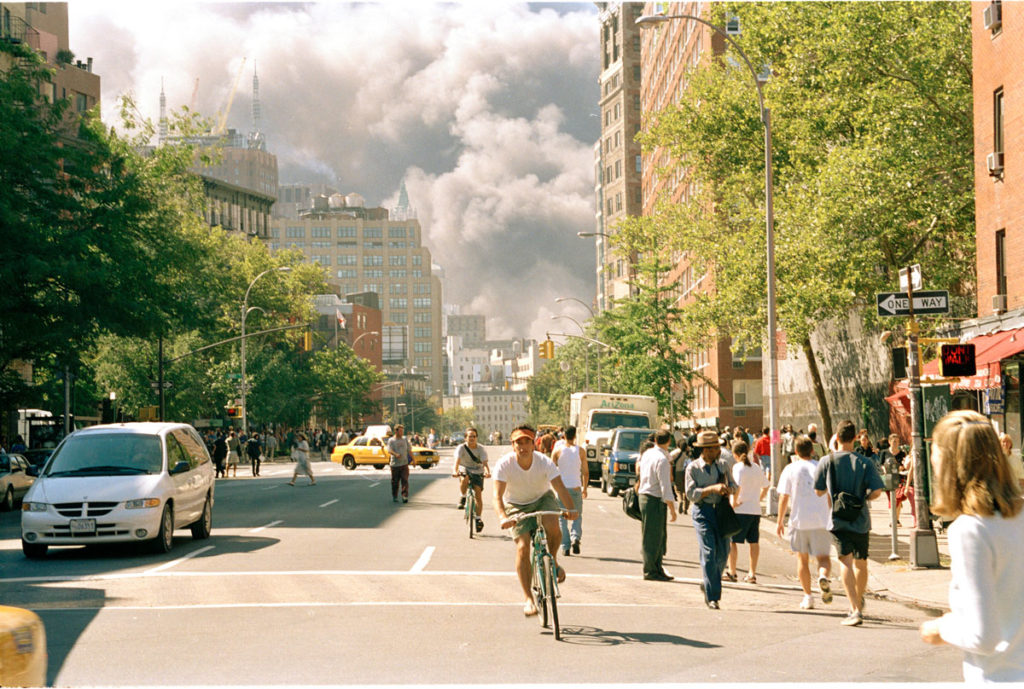
The city, for the first time in its long history, is destructible. A single flight of planes no bigger than a wedge of geese can quickly end this island fantasy, burn the towers, crumble the bridges, turn the underground passages into lethal chambers, cremate the millions.
—E. B. White, “Here Is New York,” 1948
From my third-floor bedroom on West Houston Street and Sixth Avenue, the news arrived at my door by way of my roommate. A genial, gray-haired illustrator who often worked through the night, Mark gave a polite knock as he announced that a plane had crashed into the World Trade Center. It was a little before nine a.m. The word plane implied something small and private: a corporate jet, some kind of puddle jumper—the type of aircraft your mind would permit to fly off course and collide with such a highly visible obstruction. Mark had assumed the same thing—as had millions of other New Yorkers. The second assumption—inherent in the word crash—was that the collision had been an accident. Of course it had. What pilot would intentionally steer an airplane into a Manhattan skyscraper?
I dressed and ascended to the building’s seventh-floor roof deck, by which time the second tower had already been struck. I’d missed seeing it by just a few minutes (8:46 and 9:03 were the official times). A number of other residents were also on the roof. The area we lived in, on the border of Greenwich Village and Soho, was a neighborhood of low-rise townhouses, former factories, and midcentury apartment buildings of fewer than 10 stories, which allowed for sweeping views and long sightlines. On several other rooftops, similar congregations had formed. All eyes trained south—toward the bottom of Manhattan—where each of the Twin Towers had a burning gash in its side: two fuming slits from which an endless dark smoke poured into the sky.
My neighbors wore shorts or short-sleeve shirts. Some took pictures, others filmed with small digital cameras. A set of binoculars was passed around. We were roughly a mile and a half from the World Trade Center, but the separation seemed much greater, as if we were watching something on television. Many people hadn’t even seen the second airplane. They’d assumed that the second blast had been fallout from the first: with one explosion reaching across to trigger another. It was widely agreed what a daunting task lay in store to repair these two skyscrapers, while no one—not even for a passing second—believed that either tower would be gone after the smoke cleared.
With the binoculars I had an eerily close view. Bright shards of glass floated among drifting debris in the thick billows of smoke. Aimless sheets of paper wafted upward, somehow escaping the blaze. A woman on my roof gasped suddenly. She covered her mouth and pointed a timid finger, saying she had seen—or thought she had seen—somebody jump. No jumper had crossed my binoculared view, but with the naked eye it was easy to imagine the worst for any stick figure shed by the buildings. Much harder to imagine was the hellscape inside that would force someone to plunge to their certain death.
Over the next hour, people migrated between their apartments and roof deck as they sought updates on television. In my bedroom I learned of a third plane crash—into the Pentagon—at which point all remaining doubts were put to rest. America was under attack. It was 9:37 a.m., and the FAA ordered all flights (some 4,500) to be grounded. Evacuations began at the Capitol and in the West Wing of the White House. I was still processing this information as I returned to the roof deck, whereupon I witnessed something almost as unfathomable.
The South Tower had vanished. In its place was an enormous gray cloud, the significance of which I failed to grasp—even after being told what had happened. “You mean some floors collapsed? A large chunk of debris?” The amount of smoke was astonishing.
“No—” my neighbor answered, “—the building collapsed. The whole thing came down!”
I couldn’t envision what that even looked like. Had the building toppled over? Did it break apart and fracture into multiple pieces? A demolition-style collapse, like an old casino wired with explosives, simply didn’t seem possible.
What the mind fails to grasp, the eye more easily absorbs. That lesson I would learn barely a half-hour later. Most of my neighbors had gone to work by then, or gone down to their apartments for more updates. The crash of United Flight 93, in a field near Shanksville, Pennsylvania, was still unknown to me. Later, everyone would learn of the brave passengers who’d raided the cockpit, without which the plane’s intended target was widely believed to be the Capitol Building or the White House.
With no teaching or freelancing that day, I took photographs with the film I’d bought at my corner bodega. I felt like something of a voyeur in aiming my camera at the burning tower, but I also felt compelled to capture what was clearly a historic moment in the making. The smoke had turned lighter but was now pouring out much more densely, like the top of a smokestack. I shot several pictures from a variety of angles, and I’d begun setting up for another when one of my neighbors shrieked.
A circular blast had exploded from the building’s crown, a ring of black smoke that was peppered throughout with bright, shining glass. An enormous fountain of debris traveled downward, erasing the building as it fell. Then the tower was gone. The entire building had vanished. I stood at roof’s edge with my camera lowered as I gaped at the giant smokescreen, just like the one from a half-hour earlier. A terrible thought entered my head: how had this looked from street level, and what were the consequences for those who’d seen it?
I would find out soon enough. Digital video was becoming mainstream by the early 2000s, and a mountain of footage would circulate around the world. In one disturbing video, taken when the first tower fell, people run screaming toward the camera and away from the approaching wave of smoke and rubble. The camera stares resolutely down the street as the people hurry past, but before long the operator starts retreating as well, with the backward-pointed lens turning jittery. A giant wall of smoke appears suddenly—some 30 stories high—and the lens loops around as the man is now running in earnest. He and everyone with him come to a quick stop. Directly in front of them appears another wall of smoke—as high as the one they were trying to outrun—and here the screaming begins. “Oh Jesus—” cries one woman, just as smoke envelops the frame. Everything fades to black soon, and all you hear is the sound of dust and unknown elements drizzling down.
Here’s what Pompeii must have been like. Everywhere you turn, clouds of debris, dust, and pulverizing rubble spill through the streets at terrifying speed. People panic in ways only familiar to us through the movies. On that smoke-darkened street, the cameraman narrates after the fact, saying his lungs had burned and he’d told himself repeatedly, “Just relax … don’t hyperventilate.” In a live report, one newswoman approached a man whose whole body was coated in a plaster-like residue. He looked weary and shaken, like someone who’d stumbled out of a war zone. The man had made a last-second escape as the South Tower collapsed, somehow navigating his way to safety. When the reporter asked about what he’d seen, his eyes grew wide, and he looked at her utterly dazed. “You don’t want to know,” he answered, shaking his head slowly. Then he walked away.
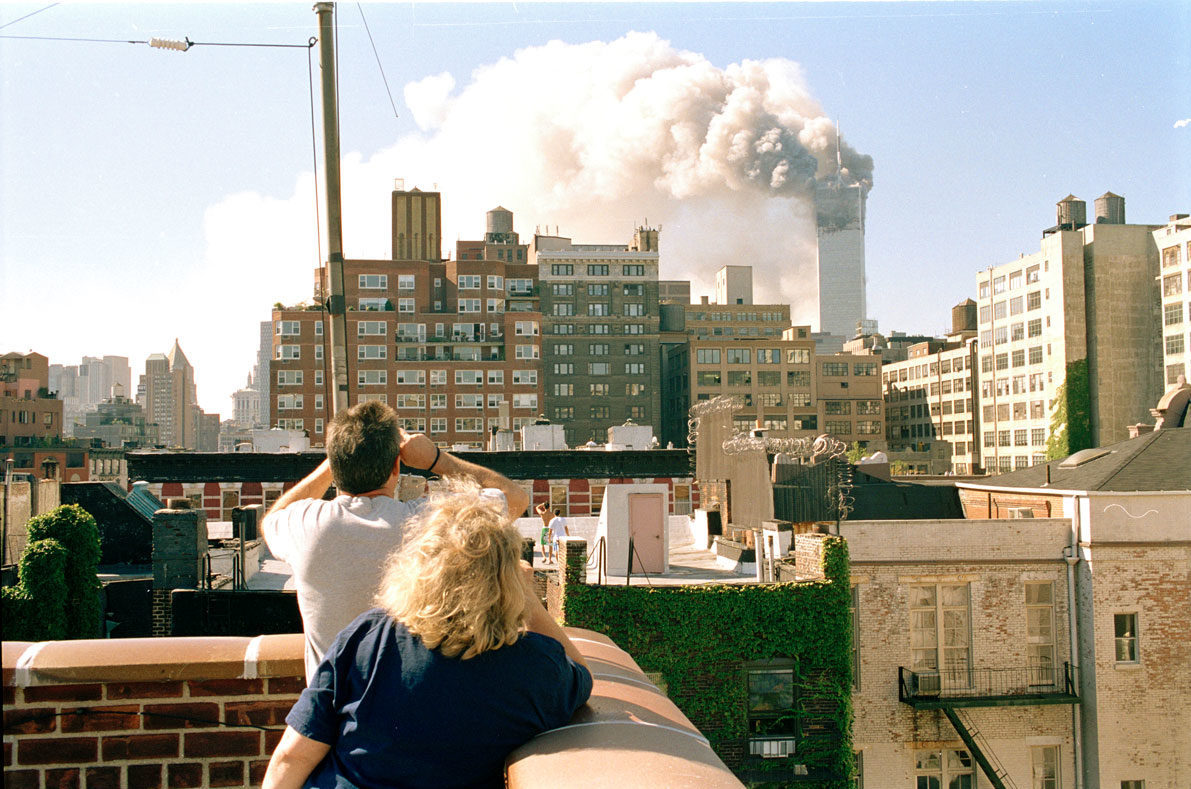
The phone lines were jammed all morning. After repeated tries I finally reached my father at his work in Chicago, then got through to my mother at home. I didn’t really feel like I was in any danger, given how targeted the attacks had been.
“I don’t care, you still stay at home,” my mother told me.
“Mom, really, I’ll be okay.”
“I want you to promise,” she said.
Did I make that promise to her? More than likely I borrowed from my teenage years of evasion, providing some tactical answer just short of a flat-out lie. Even then I knew nothing could keep me inside all day.
On Sixth Avenue, the wail of sirens was continuous. Helicopters buzzed overhead, while police cars and ambulances kept ferrying people to hospitals uptown. Most vehicles were covered in dust; some police cars had their windows blown out. Sixth Avenue teemed with people emptying out of lower Manhattan, while crowds of onlookers lined rooftops and fire escapes. In this strange atmosphere I noticed a street sign—Avenue of the Americas—which is the nickname of Sixth Avenue. The sign stood dwarfed and alone against the chaotic, smoky background. I positioned myself for a photograph, but before I could find the best angle, I discovered, out of the corner of my eye, an old college friend who lived in the neighborhood. She was with her boyfriend, and after a long group hug, we said the words that were both necessary and somehow utterly mundane. Are you okay? Is everyone you know okay? Can you believe what happened? It’s just unbelievable… We shared the names of former classmates on Wall Street, none of whom we believed were in the towers. A nervous energy overtook me. “I might’ve seen someone jump,” I blurted. “From my roof deck—while I was watching—though I couldn’t be sure.” I didn’t want to be sure, I was quick to add. After we’d hugged goodbye, and much to my enduring regret, I never went back to take that photograph.
I had no real destination in mind. Like so many others, I felt the need to be out and about, to be among other people as I tried to absorb what still seemed so unreal. Other than a few bleached vehicles emerging from the attack zone, Sixth Avenue was devoid of traffic. On a side street, a small crowd was forming on the opposite side of a parked delivery truck. I saw pedestrians rubbernecking as they went past, with some of them stopping outright. Curiosity sent me across the street to the far sidewalk, where I discovered a plainclothes policeman in a long blue windbreaker, his badge hanging by a chain around his neck. Another plainclothes officer came over, at which point the first guy placed a call on his cell phone.
I had to stand back to take in the full scene. Painted across the truck’s long body was a bizarre-looking cityscape: a row of windowless steel buildings patched all over with riveted steel panels. The block-shaped buildings were actually letters that spelled out Rebel Style. Astonishingly, just above them, a fighter jet flew low with missile-loaded wings and an explosive halo of fire surrounding the plane. The jet’s body was also comprised of letters, balloon-shaped and squinching together, to spell the word KaBoom.
Where was the owner of this truck? Why was it left unattended, right out in the open? Could this really be a coincidence, given what had just happened? The policemen offered little assurance, with their silence and their blue FBI-style windbreakers. As soon as someone said “truck bomb,” it took only a few seconds for everyone to disperse. I sprinted as fast as I could up Sixth Avenue—back toward the apartment I never should have left—as I remembered with shame the casual disregard I had shown my mother earlier that day.
Of course, it was a false alarm. Word went around that it was just the work of a local gang, which tagged most vehicles stored in a neighborhood parking lot. The block buildings were a prison, it turned out, which became clearer when you noticed the razor-wire fencing in between the two words. The attack plane seemed to suggest a form of violent breakout. This time I didn’t fail to take pictures, and although I shared the episode with friends later that day, I didn’t tell my parents about it that night. Even a false alarm, I knew, would only increase the worries of a mother and father already on edge.
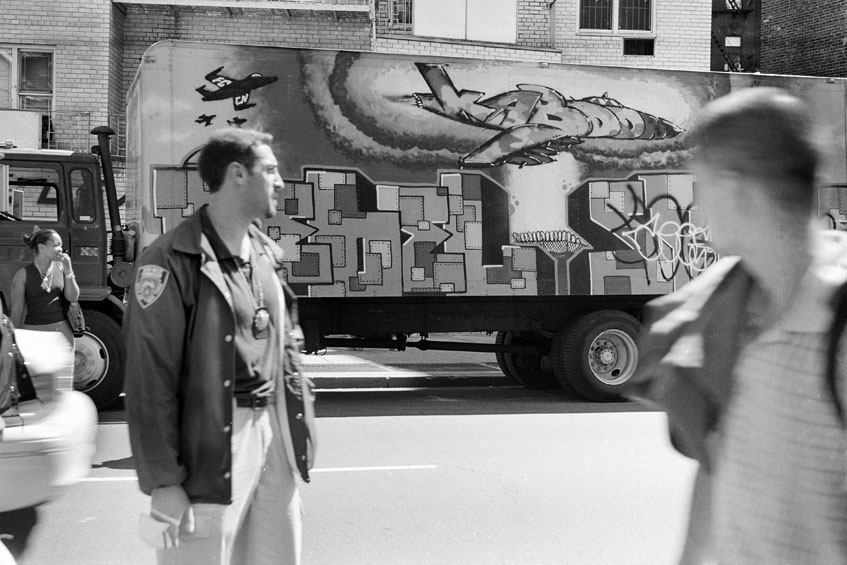
On the morning of September 12, a tall white cloud still hung over lower Manhattan. Fires continued to burn in the Pentagon, where an estimated 800 people had died. The part of downtown where I lived felt quiet, as the streets below 14th were closed to traffic. Limited mail service was expected. So much ruin lay so close to me, yet the destruction itself was invisible, walled off by the Financial District. If not for the perpetual screen of smoke, and the perpetual images on television, the wreckage would’ve been all but unimaginable.
In The New York Times, the headline story described the “merciless sight of bodies helplessly tumbling out” of the burning towers: “some of them in flames.” For those on the ground, “Every sound was cause for alarm. … People hid beneath cars and each other. Some contemplated jumping into the river.”
The numbers were devastating. Among the two towers, four airplanes, emergency responders, and the Pentagon, the death count would reach nearly 3,000. Seven members of my local fire station had perished. The first official fatality—“Victim 0001,” as recorded by a medical examiner—was Mychal Fallon Judge, a chaplain with the New York City Fire Department. After the first plane crash, Father Judge rushed to the city’s emergency command post in the North Tower lobby, where he offered prayers and comfort to victims and rescuers alike. It was harrowing, nonstop work. In a later account, a fireman said that all of them knew each smash to the ground was another person. Even for a seasoned chaplain, the enormity of suffering took its toll. According to his biographer, Michael Daly, the chaplain was repeating the words, “Jesus, please end this right now! God, please end this—” at the very moment the neighboring tower collapsed. Flying debris rained down on the lobby. A crushing fragment struck the chaplain’s head and cut short his prayers.
Many other tragic stories would come out. At Cantor Fitzgerald, the investment bank with offices in the North Tower, 658 of 960 employees were killed. All around the city, photos of the missing appeared. They were plastered to lampposts, playground fences, and the sides of buildings. When your eyes didn’t sting with grief, they filled with appreciation for the rescue workers and emergency responders. You felt a deep, unspeakable gratitude for these individuals who labored tirelessly around the clock. For men who had run up the stairwells—instead of down—into buildings drenched with fire. For men who’d been told by their commanders to evacuate, and had yelled back: “I refuse the order.”
The New York Mets and Yankees traded their caps for ones that read NYPD, NYFD, and Port Authority. Two Sundays later, when football resumed, 300-pound linemen held hands during the national anthem, their faces streaming with tears. At a makeshift memorial near my building, a widely circulated newspaper cartoon had been made into a poster. It showed a giant fireman next to a giant policeman, with both men overlooking a smoking Manhattan skyline. The caption read: New York’s other Twin Towers. Overseas, Russia observed a moment of silence for the attack. Buckingham Palace played our national anthem. People began calling Rudy Giuliani America’s Mayor. He had been at the emergency command center—the same place as Father Judge—when the South Tower fell. The blustery, sometimes-tyrannical mayor turned into a sympathetic figure as he walked the streets afterward, speaking with constituents. Here was a leader shaken by experience: a vulnerable man who, perhaps for the first time, understood the limits of his own power.
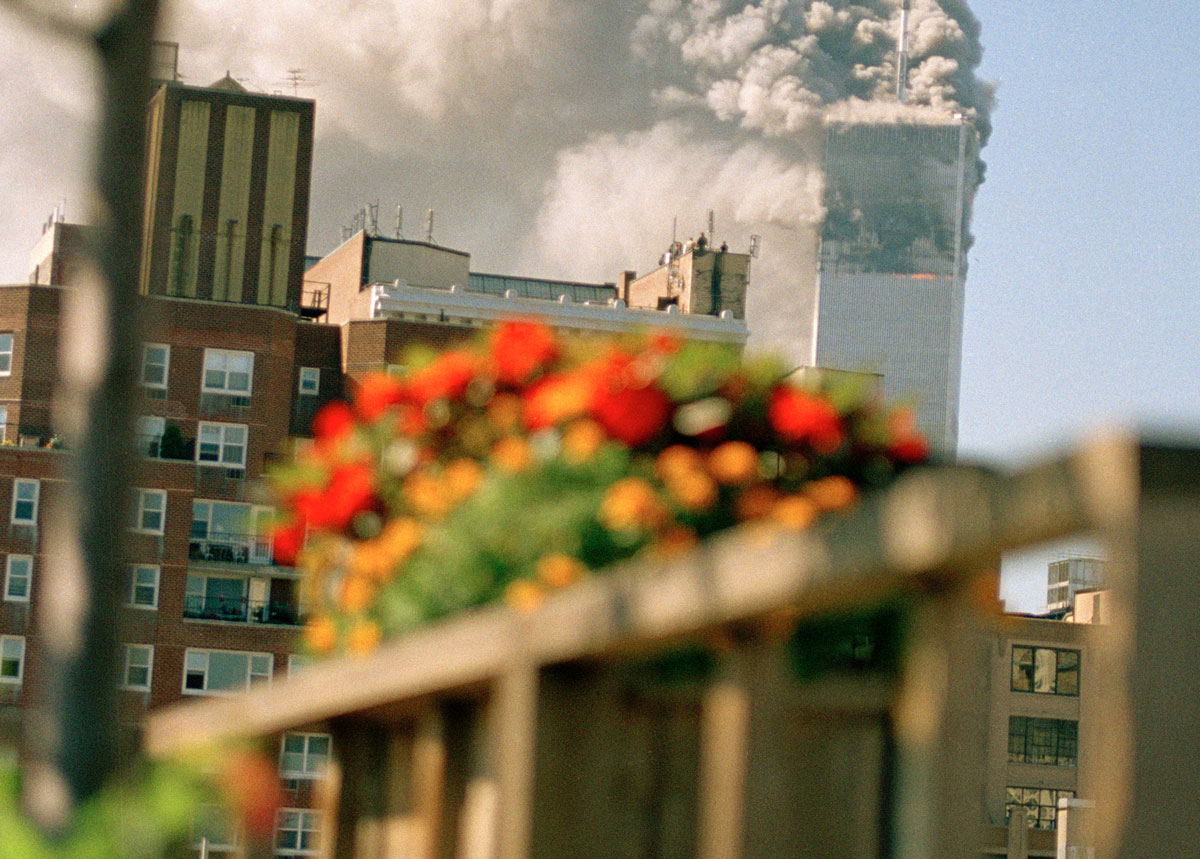
On the Monday morning of September 17, I waited in the Main Concourse of Grand Central. Leaving New York was almost impossible by plane or rental car, so I was taking the train to the Westchester County Airport, where I would rent a car and drive to Chicago for the High Holidays.
Shortly after 8:30, I stood in a ticket line amid a rush of morning travelers. I was gazing at the concourse’s great arched windows—their elegant grids of steel reminded me of the Musée d’Orsay in Paris, where I’d lived many years before—when everything became quiet. A large space opened up in the middle of the train station as 12 firemen came through, wearing dark protective gear with yellow reflective stripes. They traveled in two parallel columns, six men each, keeping their eyes in front as though unaware of all the attention. What started as a rumble of applause quickly built into a loud ovation. It swept the ground level of the Main Concourse, ascended the lofty stairwells, and echoed throughout the giant hall. Still the men carried on as before, without breaking stride. What mission could they have been on? What could possibly have brought them into Grand Central? None of us would ever find out. You would no sooner stop these firefighters than you would interrupt soldiers on a field of battle. They had entered the city’s busiest hub and tried to pass through unnoticed, but on that Monday morning, a few thousand people simply wouldn’t allow it.
On October 7, under the banner of Operation Enduring Freedom, the United States and Britain launched air and missile strikes on al-Qaeda and Taliban targets in Afghanistan. Once more, all eyes became glued to the television. America’s military had been set in motion, but the giddiness of battle was followed by aftershocks of fear. Sleeper terrorist cells might already be in place, we were warned. Since September 18, envelopes containing anthrax spores had arrived at several news organizations in New York and Florida, as well as at the offices of two U.S. senators, including the majority leader, Tom Daschle. New York’s governor, George Pataki, had to evacuate his midtown office when anthrax spores were found in the building. My father prescribed me a bottle of Cipro, the antibiotic that treats anthrax exposure, and the vial of oversize pills would sit on my dresser for months.
I determined not to live my life in paranoia, but a modest fear still gnawed at me. I felt it every time I descended the steps of a subway station, every time I went to a public park or movie theater. In those days, we all had to come to terms with a new reality. Men in paramilitary gear led bomb-sniffing dogs through train stations and Times Square; we took off our shoes and unpacked our laptops in airport security lines. Once, after my carry-on had traveled through the X-ray machine, a security guard promptly removed my nail clippers, snapped off the semi-sharp nail file, and returned the item before allowing me to proceed with my flight.
What does it mean to Never Forget? In the aftermath of 9/11, this mantra appeared widely in store windows, on T-shirts, and on bumper stickers. The World Trade Center was referred to as sacred ground, but it’s fair to ask, 20 years later, how sacred does 9/11 remain in the hearts of New Yorkers? As a country, what kind of collective memory do we still share?
For several years afterward, I watched on television the annual name-reading ceremony at the site itself, the family members bringing me to tears each time. At the fire station next to my old building, I would attend the yearly memorial. The backed-out fire engines block off a lane of Sixth Avenue as the men line up for several moments of silence. More than a hundred bystanders turned out for the first anniversary. Parents and children, dog walkers, men with overcoats and briefcases, teachers leading a troop of students. Flowers and greeting cards lined the station entrance. The number of onlookers has consistently declined over the years (except for a spike at the 10-year mark), to the point where only a few stand watch during the moment of silence, usually because they happen to be walking by at that moment.
Even if you forget what day it is, it’s impossible to miss the twin blue beams projected four miles upward from Battery Park, visible every September 11 night from as far as 60 miles away. Nor can you miss the rebuilt Freedom Tower at One World Trade Center, an octagonal glass structure that dwarfs all other buildings in lower Manhattan. Far more interesting is the Memorial Plaza that sits behind it. Two giant pools, nearly an acre each, occupy the footprints of the former towers. On all four sides, thin jets of water shoot out from hundreds of finger holes, together forming a beautiful threaded curtain. Thirty feet down, the water drains slowly toward a large square void in the center, and if you spend even a few minutes beside these pools, any other memorial seems hard to imagine.
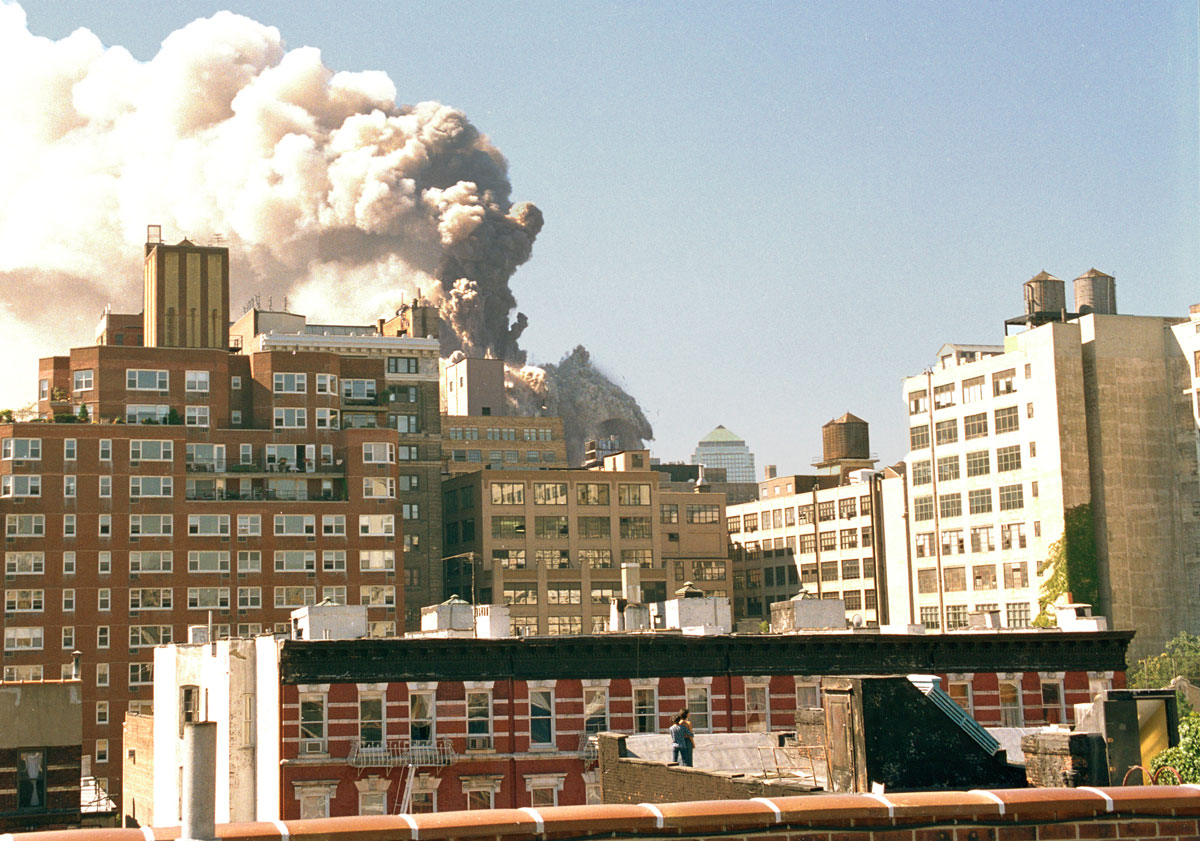
After 9/11, for those whose hearts would darken toward Muslims, President Bush showed tremendous valor in visiting a mosque. He stated publicly that “Islam is peace,” but his words could not hold back the inevitable tide of Islamophobia. In big cities and small towns across America, Arab and Muslim businesses, mosques, and Islamic schools were vandalized, set afire, or marked with burning crosses. The rash of hate crimes didn’t distinguish by gender or age. They included two Muslim women who barely avoided getting run over at a gas station, a 12-year-old who was boy punched in the face and called a terrorist in front of his own house, and a Sikh man murdered at the Arizona gas station that he owned.
What our government did was just as damnable. Under the Patriot Act, it could now surveil phone and email communications of its citizens, and collect their bank and credit records, all without a warrant. Immigrant Muslims were held at the border indefinitely, without access to the courts, while detention centers like Guantánamo Bay and undisclosed black sites overseas used “enhanced interrogation” techniques that amounted to torture. These practices were green-lighted by the Justice Department, which drafted memos calling al-Qaeda and Taliban captives “enemy combatants” and stating that they weren’t protected under the Geneva Convention.
On the flimsiest of pretexts, we invaded Iraq, a country that harbored no al-Qaeda terrorists and bore no relationship to the attacks on 9/11. The war would lead to the death to many thousands, destabilize the Middle East, and create ISIS, a bloodthirsty organization as monstrous as al-Qaeda. Back in America, those who questioned the war’s falsehoods or its striking mismanagement were bluntly told to “support the troops.” Here was a menacing, all-too-familiar rebuke, a way to silence opposition with accusations of disloyalty.
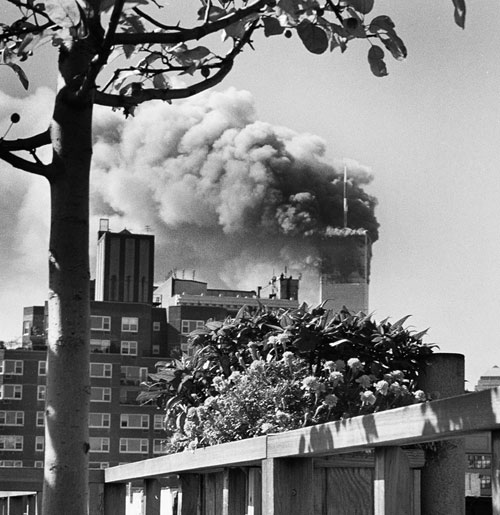
When I think back on 9/11, and the quiet summer morning that ended in such sweeping, unforeseeable violence, I’m reminded of Shirley Jackson’s short story “The Lottery.” Toward the story’s beginning, as the young boys and girls assemble in the town square, the narrator says that “the feeling of liberty sat uneasily upon them.” One recalls the mixed anticipation of summer vacation: the excitement of so many unstructured days, the twinge of unrest at so much free time to fill. Jackson’s line suggests something far more ominous. It hints at the town’s great struggle in freeing itself from the appalling ritual that so many of them find disturbing. To raise their concerns and enact change, they must break the hold of collective inertia and break through the criticism so often leveled at voices of dissent.
On the 20th anniversary of 9/11, the fight for liberty continues. We see it in the battle for social, racial, and economic justice; in the struggle of our veterans to rebuild their lives; and in the fight for every voter to be counted. We saw it in the election of our first African-American president, only to be succeeded by a man who banned Muslims, bragged about a border wall, and separated migrant children from their parents. If, as a country, we are ever to dilute our own worst instincts, we must remember the words of the first official victim from 9/11. Just one day before he died, Mychal Fallon Judge addressed an audience of firefighters at a memorial, where he exhorted his listeners: “We have to hold each other for as long as we have each other.” In doing so, the beloved chaplain laid down a marker for us all. Is there any better path toward breaking down dogma, overriding politics, or stripping away false patriotism? Such faith could light the candles in any house of worship across the land, and it reminds us that no country ever wins a war on terror when it fails to protect a sense of peace.

